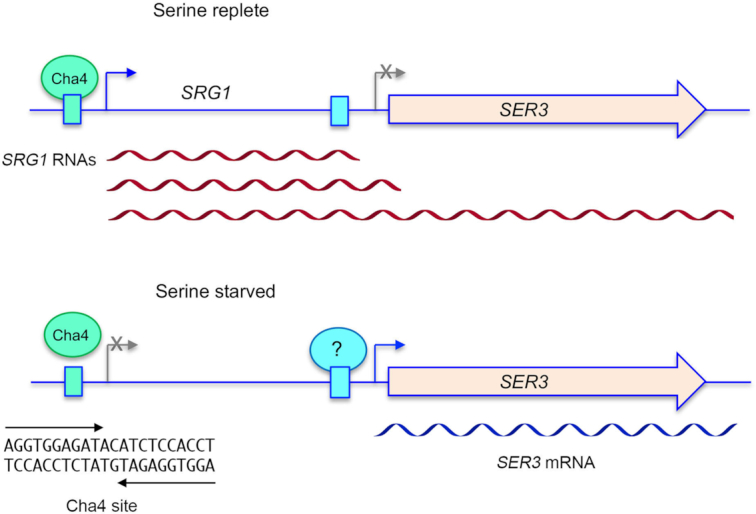Figure 2.

Regulated transcriptional interference at the budding yeast SRG1-SER3 locus in response to serine availability. (Top panel) In serine replete cells, activation of SRG1 transcription by Cha4 results in synthesis of three species of lncRNA (red wavy lines) that are processed at different poly(A) sites. Pol2 synthesizing these lncRNA will traverse the SER3 mRNA promoter. (Bottom panel) SRG1 transcription is turned off quickly in response to serine starvation, which makes the SER3 promoter available for binding to an as yet unknown activating transcription factor and hence synthesis of SER3 mRNA (blue wavy line). It is suggested that Cha4 remains associated with the SRG1 promoter during serine starvation but is unable to activate lncRNA synthesis. The putative Cha4 duplex DNA binding site is shown with the inverted repeat demarcated by arrows.
